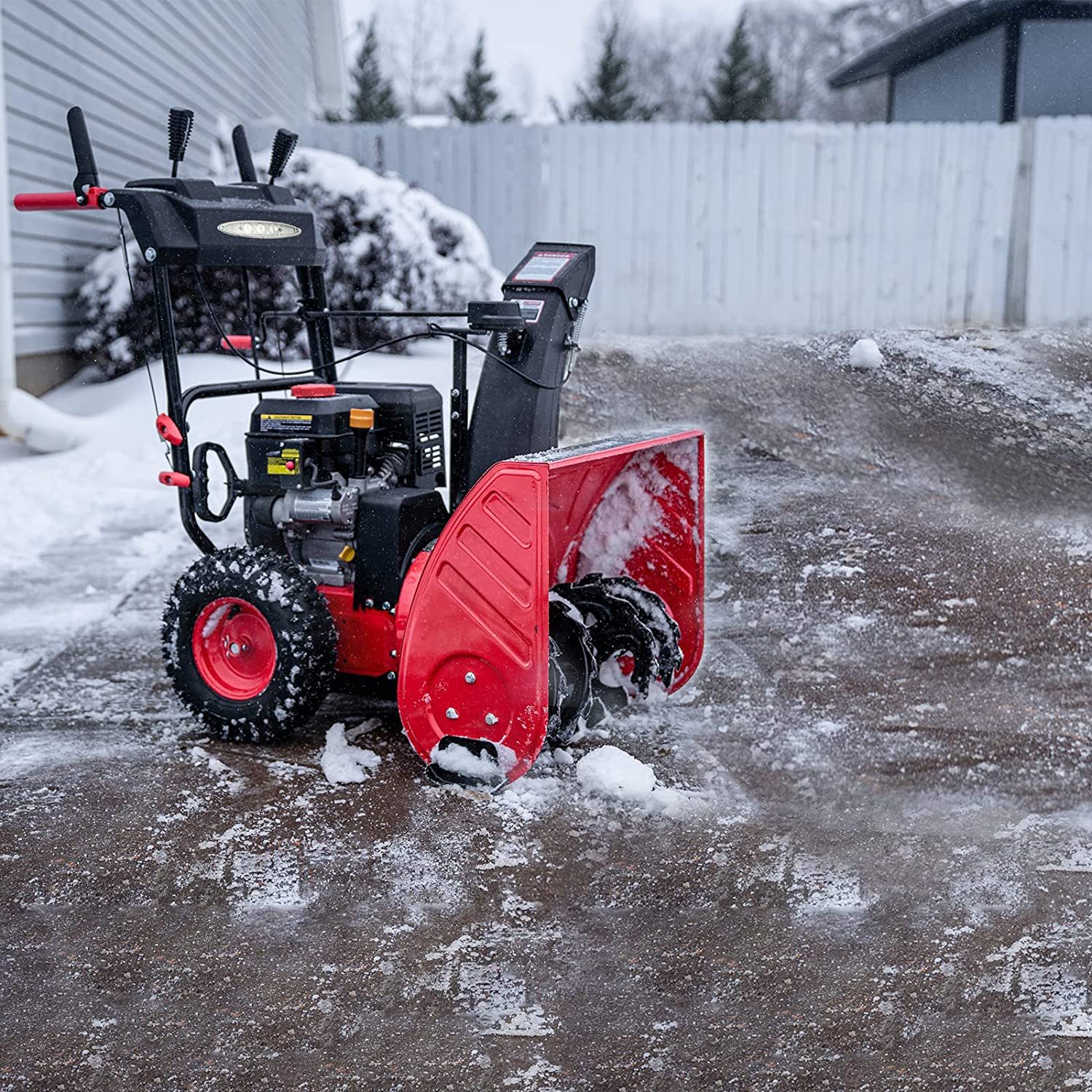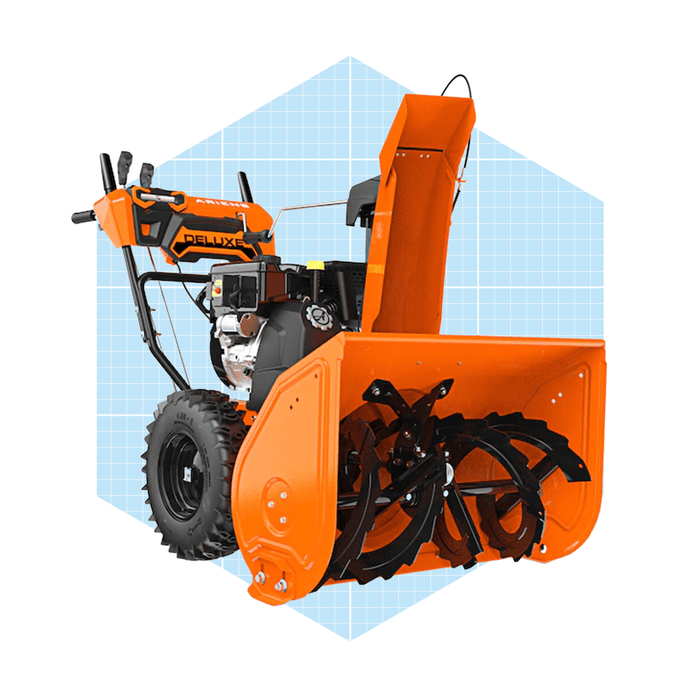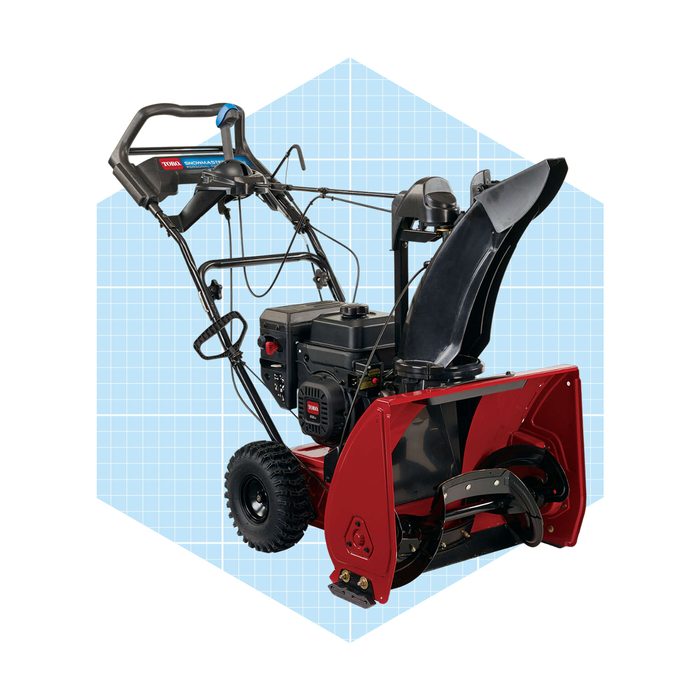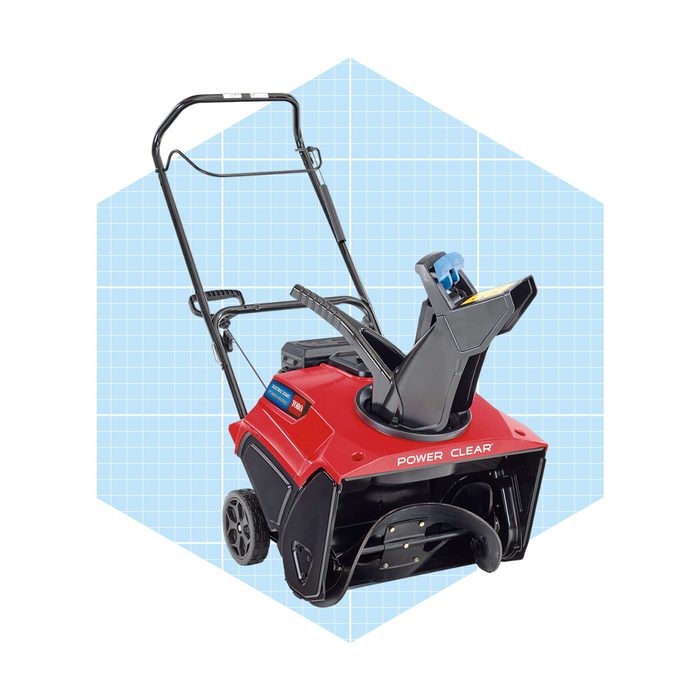 via merchant
via merchant
If you live in an area prone to light snowfalls and want to upgrade from shoveling your driveway, consider the Toro gas snow blower. This budget-friendly model clears a 21-inch path and is ideal for nine inches of snow or less. A simple push-button electric start eliminates pull-starting a cold engine.
Plus, with its four-cycle engine, you don’t need to mix oil and gas, making maintenance a much easier task. This single-stage gas snowblower is compact at just 42 inches high and 84 pounds, so not only is it easy to push and make turns, but it won’t take up much space in your garage or shed.
Stages: single | Clearing width: 21 in. | Optimal clearing depth: 9 in. | Rated throw: 40 ft. | Start type: electric start | Chute rotation turning radius: 210° | Self-Propelled: yes
Pros
- Affordable
- Lightweight
- Easy to start
- Compact size for easy storage
Cons
- Works best for nine inches of snow or less
- No power steering
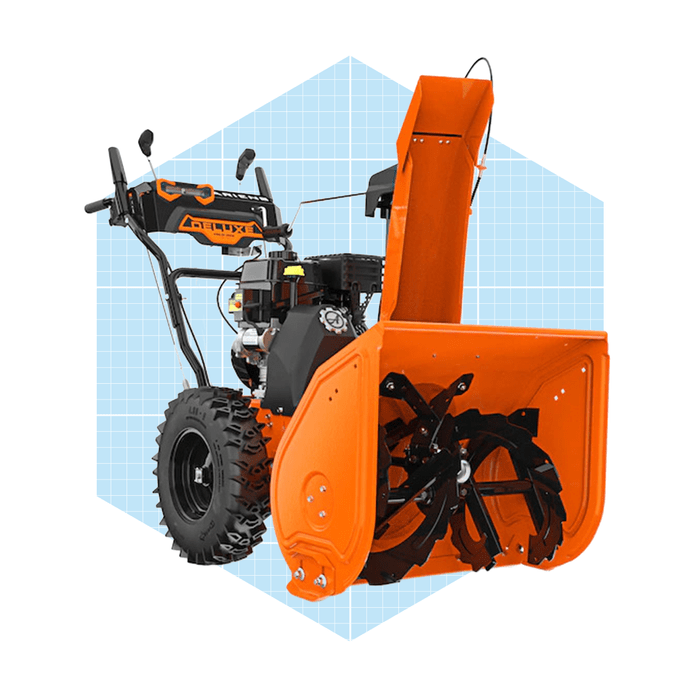 via merchant
via merchant
For heavier, wetter snow, a two-stage snow blower is ideal for clearing large areas. The Ariens Deluxe Two-Stage has two augers—one to cut into the snow and break it down; one to move it through the chute—and clears a wide 28-inch path. A 14-inch steel auger helps you move quickly through heavy snow and ice, even the hard-packed stuff left from snow plows at the end of your driveway.
This 250-pound snow blower has auto-turning for precise and effortless steering around corners, eight variable speeds and crank chute control, so you don’t have to stop to adjust the chute whenever you change directions.
Stages: 2 | Clearing width: 28 in. | Optimal clearing depth: 12 in. | Rated throw: 50 ft. | Start type: electric start | Chute rotation turning radius: 200° | Self-Propelled: yes
Pros
- Perfect for heavy, wet snow
- Easy to maneuver
- In-dash headlight
Cons
- Size may make it difficult to store
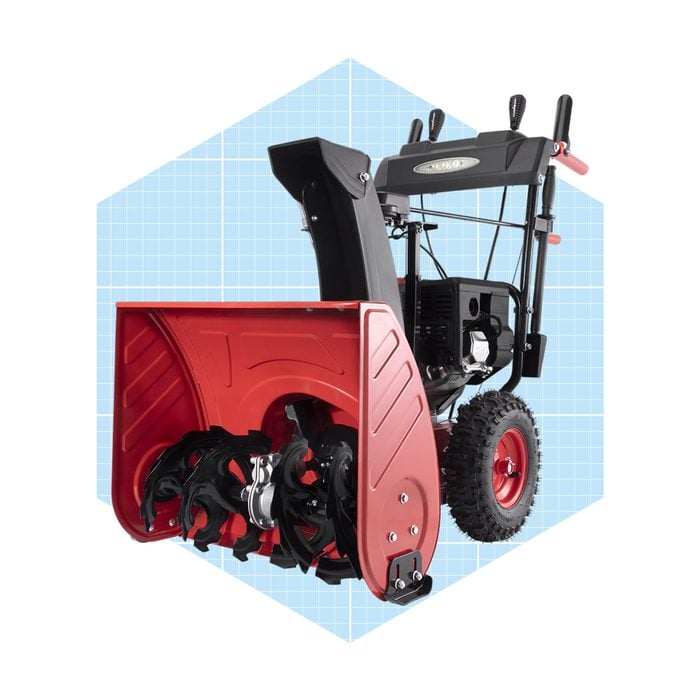 via merchant
via merchant
For those looking for the best bang for their buck, check out the PowerSmart Self-Propelled Two-Stage Snow Blower, which is one of the top-rated snow blowers on Amazon. This model easily clears up to a foot of snow. Its anti-clogging system prevents augers from sticking in wet or icy snow.
This self-propelled gas snow blower has eight speeds, an electric push-button start and you can operate the chute with just one hand. At 143 pounds, it’s also lighter in weight than other two-stage gas snow blowers, making it far easier to maneuver. Buyers also noted it was easy to assemble.
Stages: 2 | Clearing width: 24 in. | Optimal clearing depth: 12 in. | Rated throw: 40 ft. | Start type: electric start | Chute rotation turning radius: 180° | Self-Propelled: yes
Pros
- Budget-friendly
- Anti-clog system
- Electric push-button start
Cons
- Works best for 12 inches of snow or less
What to Consider When Buying a Gas Snow Blower
When buying a gas snow blower, there are a few things to keep in mind. First, how much snow do you generally get where you live? What size area will you need to clear? Some models, like one-stage snowblowers (also called “snow throwers”), work best for smaller areas and lighter amounts of snow. Two-stage snowblowers have two augers and make quick work of large driveways and heavy, wet snow.
If you live in an area where you’ll spend a lot of time clearing snow in the winter, you might want additional features such as a headlight for night use and handle warmers to keep you comfortable. You should also consider the size and weight of gas-powered snowblowers. Lighter models are easier to maneuver, especially on turns, but might not be able to handle heavy snowfalls. Large models easily handle mountains of snow but might be too big to comfortably fit in your garage.
According to Dodds, here are a few other features to consider:
- Power: The vast majority are powered with 212cc engines up to 420cc single-cylinder blocks. The larger the cc’s, the more power for larger widths.
- Stage: “Stage” means how many times the snow is moved by an auger or propeller-type mechanism. Single-stage snow throwers are used for relatively low levels of snowfall. They are propeller-driven, not transmission-driven. The horizontal propeller system pulls the machine forward and throws the snow upwards through the chute. Two-stage is the most common. The products use a horizontal auger, pulling snow into the cavity of the machine and then a second propeller throws the snow upwards through the chute. Three-stage snow blowers are a two-stage snow thrower that has a coring auger in the front that helps break up icy snow.
- Clearing Width: Single-stage and battery-powered blowers are under 26 inches for the vast majority of products out there. Gas-powered blowers are between 24 and 36 inches. Very few models are larger.
- Warranty: This ranges from one year to three years.
- Throw: Throw is the distance in which blowers throw snow and probably the most contended. The weight and wetness of the snow play a factor in the throwing distance. However, if the snow is dry and light, these machines can easily throw snow well over 15 to 20 feet.
- Cost: Single-stage snow throwers range from $200 to $1,000, while two-stage throwers range in cost from $500 to over $3,000 and limited three-stages can range from $1,700 to $2,200.
Why You Should Trust Us
I lived through a major home renovation in 2019, know the ups and downs of home improvement and love sharing tips with readers. A veteran journalist of both print and television, I’ve won several awards for my writing and have covered everything from the environment and education to health care, politics and food.
Emily Way is an Associate Shopping Editor for Family Handyman with experience researching products and recommending the best designs to consumers. She researched and updated this piece. Way consulted Randall Dodds, snow blower expert and Senior Vice President of Merchandising at Tractor Supply.
How We Found the Best Gas Snow Blower
To find the best gas snow blowers we first talked to industry experts and learned what traits to look for. In our search, we limited our picks to trusted brands who have been around for a while. Our top 10 picks included a handful of bestselling gas snow blowers from brick-and-mortar stores, along with a few top-rated finds on Amazon.
To further narrow down our list, we looked at real reviews by real folks. This ensures each pick stands up to the test of time and is well worth the cost. Our shopping experts vetted the snow blowers on this list, ensuring each earns high marks in real-world applications. We waded through the avalanche of snow blowers so you don’t have to conduct the research on your own—that’s our job!
FAQs
How much gas does a snow blower use?
This depends on how large the gas tank is, the weight and the height of the snow, and how big your gas snow blower’s engine is. On average, you’ll get about one hour to 90 minutes worth of running time with a full tank of premium or regular gas.
Should I store my snow blower with gas in it?
Always check with the manufacturer or the buyer’s guide, which will have recommendations for maintenance and storage, along with snow blower oil change tips. If you’re using gas straight from the gas pump, then yes, you’ll want to drain the fuel before storing a snow blower for the summer.
Some companies recommend adding a stabilizer as an additive for the off-season. Stabilizers help prevent clogs, which allow you to keep the fuel in the snow blower. Some brands recommend draining gas before storage—even if gasoline contains an additive.
What is the best gas for a snow blower?
“I recommend gasoline that does not have ethanol,” says Dodds. “I highly recommend TruFuel, which is 100% clean of ethanol. This makes it easier to start, creates more power, and most importantly, there is no engine damage caused by ethanol.”




















